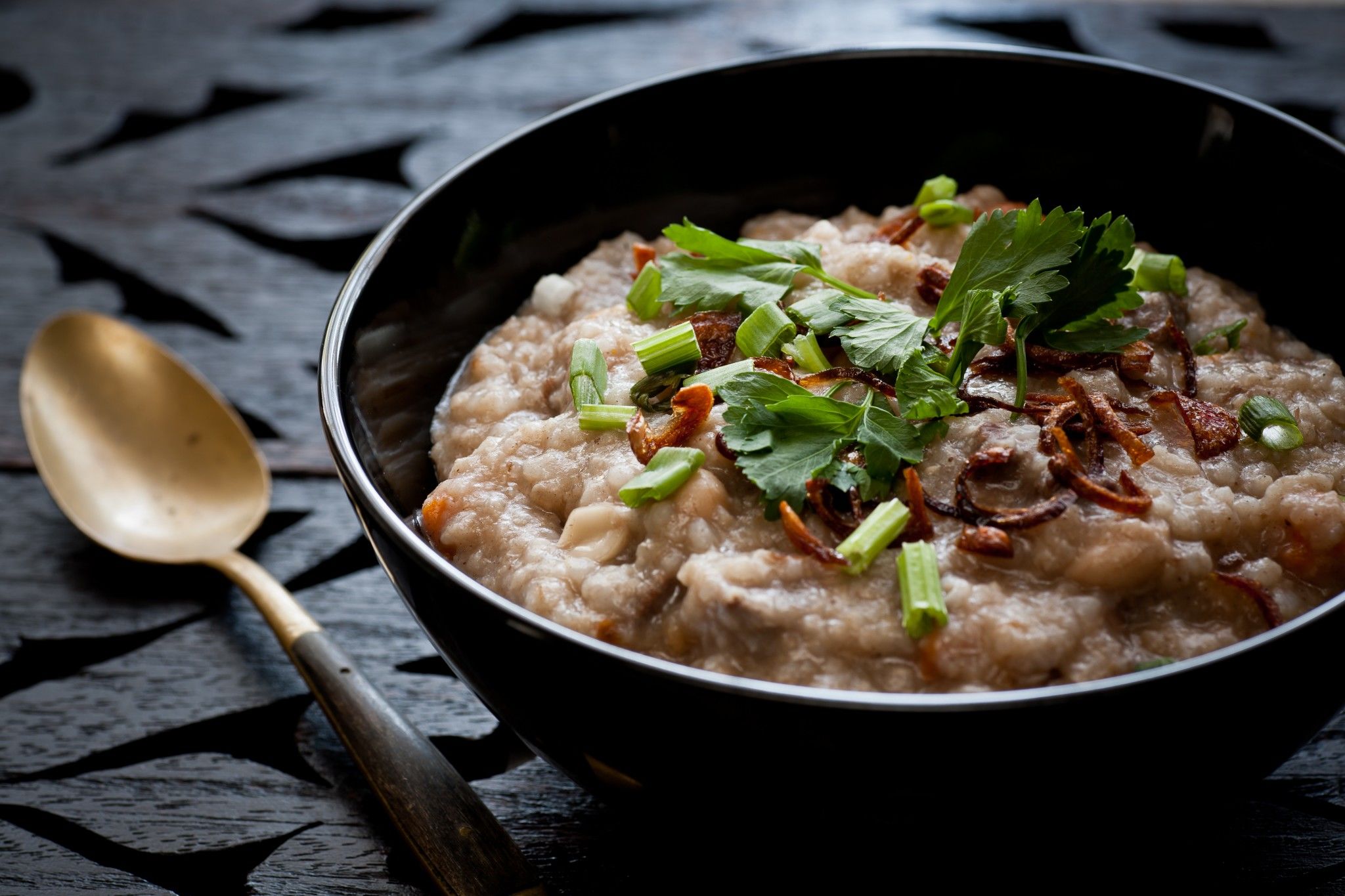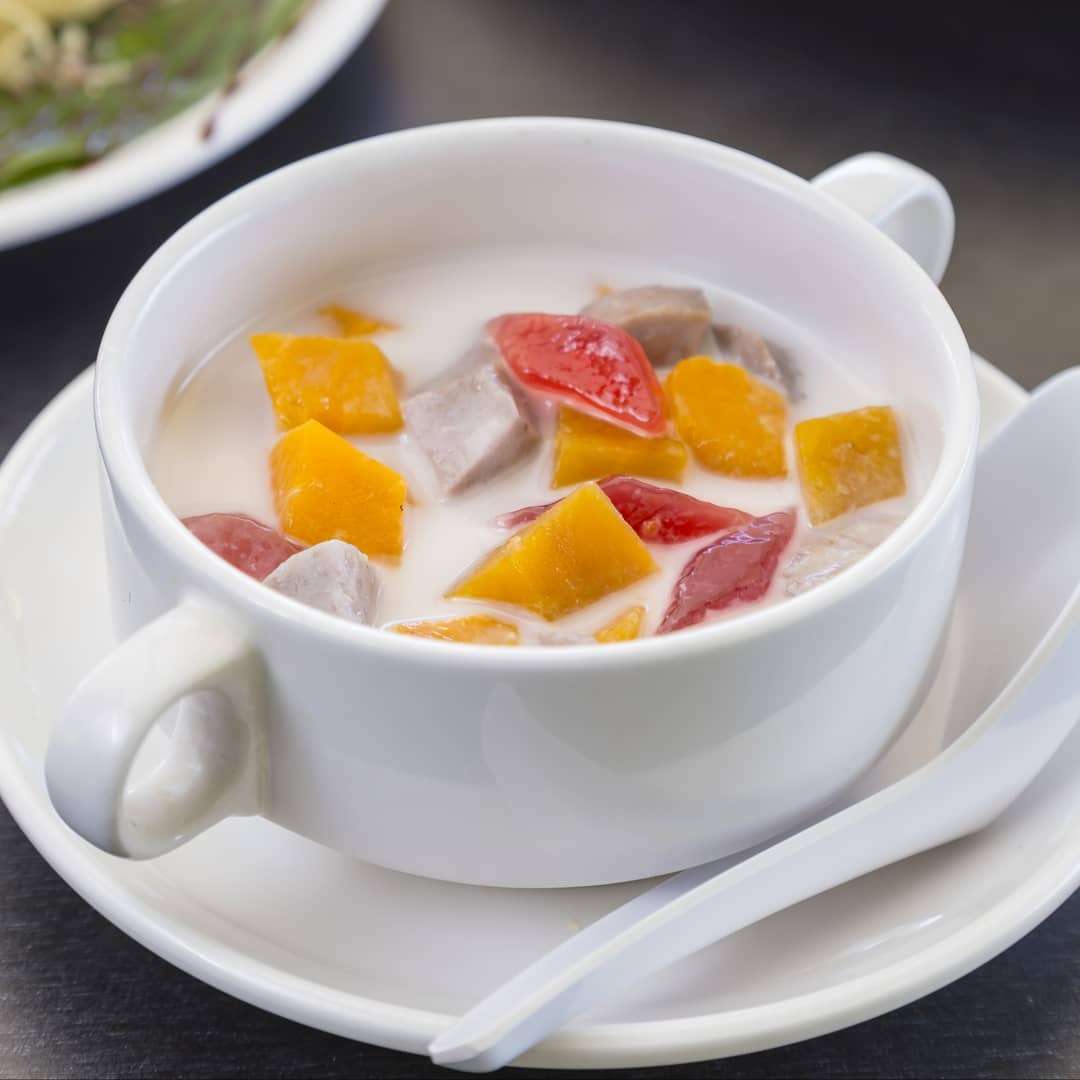Bubur, a beloved dish across Southeast Asia, is a comforting and versatile porridge that holds cultural and culinary significance. Its origins trace back centuries, and it has evolved into a culinary tapestry, with each region boasting its unique variations. In this comprehensive guide, we’ll delve into the world of bubur, exploring its ingredients, cooking methods, and the myriad ways it can be enjoyed.
From the fragrant Bubur Ayam to the creamy Bubur Sumsum and the earthy Bubur Kacang Hijau, each type of bubur offers a distinct flavor profile and texture. Join us on this culinary journey as we uncover the secrets of bubur, empowering you to create this comforting dish in your own kitchen.
Introduction to Bubur Recipe
Bubur is a traditional Indonesian dish made from rice porridge. It is a staple food in Indonesia and is often served as breakfast or dinner. Bubur is made by simmering rice in water or coconut milk until it becomes soft and creamy.
It is then usually topped with a variety of ingredients, such as meat, vegetables, eggs, and spices.Bubur has a long history in Indonesia, dating back to the Majapahit Empire in the 14th century. It is believed that bubur was originally a simple dish made from rice and water.
Over time, it became more elaborate, with the addition of various toppings and spices. Today, bubur is a popular dish throughout Indonesia and is enjoyed by people of all ages.
Ingredients Commonly Used in Bubur Recipes
The ingredients used in bubur recipes can vary depending on the region of Indonesia. However, some of the most common ingredients include:
- Rice: The main ingredient in bubur is rice. Any type of rice can be used, but short-grain rice is the most common.
- Water or coconut milk: Bubur is made by simmering rice in water or coconut milk. Coconut milk gives bubur a richer flavor and creamier texture.
- Salt: Salt is added to taste.
- Toppings: Bubur is often topped with a variety of ingredients, such as meat, vegetables, eggs, and spices. Some of the most common toppings include:
- Chicken or beef: Chicken or beef is a popular topping for bubur. It is usually cooked and shredded before being added to the porridge.
- Vegetables: Vegetables such as carrots, celery, and onions are often added to bubur. They add flavor and texture to the dish.
- Eggs: Eggs are a common topping for bubur. They can be cooked in a variety of ways, such as fried, scrambled, or poached.
- Spices: Spices such as turmeric, coriander, and cumin are often added to bubur. They give the dish a flavorful and aromatic taste.
Types of Bubur
Bubur, a versatile Indonesian dish, comes in a variety of types, each offering a distinct flavor and texture.
From the savory and hearty Bubur Ayam to the sweet and creamy Bubur Sumsum, there’s a Bubur to satisfy every palate.
Bubur Ayam
Bubur Ayam is a popular Indonesian breakfast dish made with rice porridge, chicken, and a variety of toppings. The chicken is usually shredded or minced and cooked in a flavorful broth, while the toppings may include fried shallots, crispy wontons, and a dollop of chili paste.
Bubur Sumsum
Bubur Sumsum is a sweet and creamy porridge made with rice flour and coconut milk. It is often served with a drizzle of palm sugar syrup and roasted peanuts.
Bubur Kacang Hijau
Bubur Kacang Hijau is a sweet porridge made with mung beans. It is often cooked with coconut milk and served with a sprinkle of sesame seeds.
Ingredients and Proportions
Creating a delicious bowl of Bubur requires a careful balance of ingredients and proportions. Here’s a comprehensive list of commonly used ingredients and guidance on their appropriate measurements:
Rice
- Long-grain white rice: 1 cup
- Medium-grain white rice: 3/4 cup
- Glutinous rice: 1/2 cup
Liquids
- Water: 6-8 cups
- Chicken or vegetable broth: 4-6 cups
- Coconut milk: 1-2 cups (optional)
Seasonings
- Salt: 1 teaspoon
- Ground white pepper: 1/4 teaspoon
- Garlic powder: 1/4 teaspoon
- Onion powder: 1/4 teaspoon
Toppings
- Crispy shallots: 1/4 cup
- Fried onions: 1/4 cup
- Sliced green onions: 1/4 cup
- Sambal (chili paste): to taste
Cooking Methods

Preparing Bubur involves a straightforward process with variations in cooking methods to achieve the desired texture and consistency. Whether using a stovetop, slow cooker, or pressure cooker, each technique offers unique advantages.
Stovetop Method
The stovetop method provides direct control over the cooking process, allowing for adjustments in heat and stirring frequency. To begin, combine the rice, water, and seasonings in a large pot and bring to a boil. Reduce heat to low, cover, and simmer for 30-45 minutes, or until the rice is tender and the liquid has been absorbed.
Stir occasionally to prevent sticking and ensure even cooking.
Slow Cooker Method
The slow cooker method offers a hands-off approach, requiring minimal attention. Combine the rice, water, and seasonings in the slow cooker and cook on low for 6-8 hours, or on high for 3-4 hours. The extended cooking time allows the flavors to develop and the rice to become incredibly tender.
Pressure Cooker Method
The pressure cooker method significantly reduces cooking time, yielding tender and fluffy Bubur in a matter of minutes. Combine the rice, water, and seasonings in the pressure cooker and cook on high pressure for 10-12 minutes. Once the cooking time is complete, allow the pressure to release naturally for 10 minutes before opening the lid.
Nutritional Value and Health Benefits
Bubur is not just a culinary delight but also a nutritious food choice. Its ingredients, including rice, coconut milk, and spices, contribute to its health benefits.
The rice in Bubur provides carbohydrates, which are essential for energy production. Coconut milk adds healthy fats and lauric acid, which has antimicrobial properties. Spices like ginger and turmeric have anti-inflammatory and antioxidant properties.
Nutritional Information
A serving of Bubur (approximately 200 grams) contains the following nutrients:
| Nutrient | Amount |
|---|---|
| Calories | 250 |
| Carbohydrates | 45 grams |
| Protein | 10 grams |
| Fat | 15 grams |
| Fiber | 5 grams |
| Sodium | 150 milligrams |
| Potassium | 200 milligrams |
| Vitamin C | 10 milligrams |
| Iron | 2 milligrams |
Cultural and Regional Variations
Bubur, a versatile dish with a rich culinary heritage, has undergone numerous adaptations across different regions, reflecting the diverse cultures and tastes of each locality. From the aromatic spices of Southeast Asia to the hearty ingredients of East Asia, Bubur has evolved into a myriad of regional variations, each boasting unique flavors and textures.
Geographical Distribution of Bubur Variations
A map of the geographical distribution of Bubur variations would showcase the widespread popularity of this dish across the globe. From the vibrant streets of Southeast Asia to the bustling cities of East Asia, Bubur has become an integral part of local cuisines, with each region adding its own distinctive touch to the recipe.
Regional Adaptations
In Southeast Asia, Bubur is often infused with fragrant spices like turmeric, galangal, and lemongrass, creating a flavorful and aromatic dish. Indonesia’s Bubur Ayam, for instance, is a popular breakfast staple, combining tender chicken, vegetables, and a flavorful broth. In Malaysia, Bubur Lambuk, a traditional dish served during Ramadan, is known for its rich and creamy texture, thanks to the addition of coconut milk and spices.In
East Asia, Bubur takes on a more hearty and savory character. China’s Congee, a ubiquitous dish, is made with simple ingredients like rice, water, and salt, and is often served with a variety of toppings such as century eggs, pickles, and chili oil.
Japan’s Okayu, a comforting dish, is prepared with rice and water and is often served with umeboshi (pickled plums) or nori (seaweed).The cultural and regional variations of Bubur are a testament to the adaptability and versatility of this beloved dish.
Whether enjoyed as a warm and comforting breakfast, a nutritious lunch, or a flavorful dinner, Bubur continues to delight palates around the world with its endless variations and regional adaptations.
Conclusion

Bubur is not merely a dish; it’s a culinary canvas that reflects the cultural diversity of Southeast Asia. Its versatility allows for endless variations, making it a beloved dish across generations. Whether enjoyed as a comforting breakfast, a hearty lunch, or a soothing dinner, bubur nourishes both body and soul.
As you embark on your bubur-making adventures, may this guide be your trusted companion, leading you to culinary delights.
FAQ Summary
What are the key ingredients in bubur?
Rice, coconut milk, spices, and often meat or vegetables form the base of bubur.
How do I achieve the perfect consistency for bubur?
Cooking the bubur over low heat and stirring regularly ensures a smooth and creamy texture.
Can bubur be made ahead of time?
Yes, bubur can be refrigerated for up to 3 days or frozen for several months.
What are some popular toppings for bubur?
Fried shallots, crispy onions, boiled eggs, and fresh herbs are common toppings.
Is bubur a healthy dish?
Bubur can be a nutritious meal, as it provides carbohydrates, protein, and essential vitamins and minerals.
